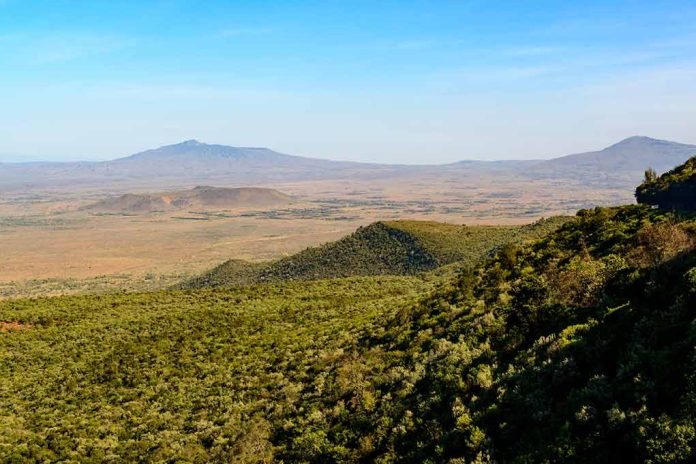
(RepublicanView.org) – Dozens of people died due to flooding and a landslide that cut off a major road in the Great Rift Valley region. Kenya is enduring floods due to an unusually wet monsoon season, and police official Stephen Kirui told reporters that the Kijabe Dam in Mai Mahiu fell and was crushed by flowing water carrying debris, including trees and rocks. Reports initially stated that the landslide was caused by a dam collapse, though the ministry of water indicated the cause was a blocked tunnel giving way. It’s been reported that at least 45 people were killed due to the incident.
Officials said the floods had blocked a railway tunnel and paramedics were forced to treat the wounded amid rising waters. As of April 29, the Red Cross confirmed that 109 people had suffered injuries, and a further 49 were missing. Kenya’s Interior Minister Kithure Kindiki ordered a full review of all of the country’s dams and reservoirs as meteorologists predict yet more torrential rainfall to come.
In the capital city, Nairobi, schools have been closed, and the main airport was recently flooded as flights were diverted. Witnesses posted images of flooding on the airport’s primary runway, while airport manager Henry Kegoye said the situation was worsened by recent refurbishment work. Floods and landslides across the country have reportedly led to 181 deaths since March.
Similarly, in nearby Tanzania, more than 150 deaths have been reported due to floods and landslides in the East African region. Prime Minister Kassim Majaliwa updated Tanzania’s Parliament saying that in addition to the fatalities, over 230 people were injured as of last week. Mr. Majaliwa blamed the weather phenomenon known as El Niño for the heavier-than-usual rains.
The United Nations’ World Meteorological Organization describes El Niño as a climate pattern associated with increased temperatures and unpredictable weather. During an El Niño pattern, water surfaces are warmer, releasing heat into the atmosphere and increasing temperatures. Climate scientist Michelle L’Heureux has said, “El Niño can cause a range of impacts, such as increasing the risk of heavy rainfall and droughts.” Weather experts say 2023 was the hottest year on record, and this is partly attributable to El Niño.
Its opposite is La Niña, which causes colder-than-average sea temperatures and brings land temperatures down.
Copyright 2024, RepublicanView.org

















